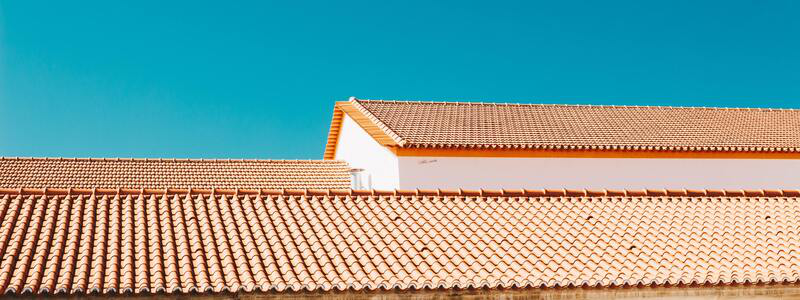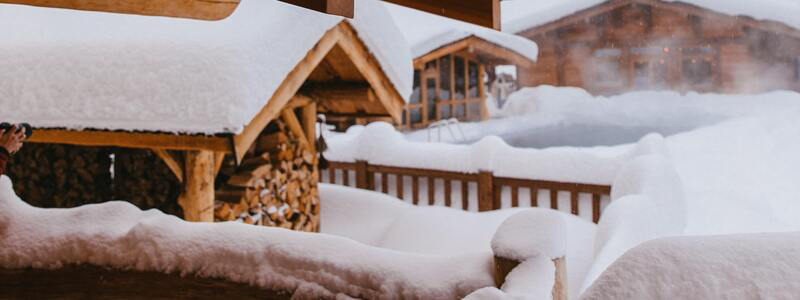
Roof Pitch Examples
The roof pitch of your home decides its lifespan, cost, and appearance. In Colorado, keeping your home safe from water, ice and snow is essential.
“Roof pitch” is sometimes referred to as “roof slope.” The term refers to the steepness of a roof measured as a rise in inches for every horizontal foot of length. An example is a 6/12 roof with a vertical height of six inches per horizontal foot. In this article, we will give you roof pitch examples and information for you to consider when making repairs.

What Are The Most Common Types of Roof Pitch?
Different structures come with different types of roof pitch. It can never be assumed that the pitch of one home or business will work on all buildings. The pitch will also determine which materials can be withstood by the structure. Roofs with higher pitches work best with shingles, tiles, shakes, asphalt, or wood, while low-slope roofs allow for roll roofing with exposed nails. The following are the most common types of roof pitch examples:
Residential
Residential roofs usually have conventional sloped roofs, meaning the roof has a pitch between 4/12 and 9/12 on most homes. Roofs that have angles exceeding 9/12 are considered steep slope roofs.
Commercial and Industrial
Commercial buildings will typically have low slope roofs. These roofs have pitches between 2/12 and 4/12. Flat roofs have a low rise, most commonly found in industrial facilities such as factories and warehouses. Although, the minimum slope of a roof must be at least ¼” to ensure proper drainage.
Different Examples of a Pitch Roof
Roof pitches boil down to the architecture of the building and what it’s being used for. Typically, hip and gable roofs are most popular in homes and residential structures, whereas flat roofs are seen in commercial and residential buildings. Here are some roof pitch examples:
Hip Roof
A gable roof consists of two faces whose upper horizontal edges meet to form a triangular-shaped ridge. This is the most common type of roof used in residential areas, which makes for exceptional water drainage, reducing the risk of water buildup.
Gable Roof
Hip roofs are pitched roofs with more than two surfaces. Hips are the term that refers to the outer angles two tops create, which are usually more than 180 degrees. This roof pitch has all sides sloping downwards, meaning a hip roof has no gables.
Mansard Roof
Mansard roofs are commonly seen in French architecture and contain unique design elements such as windows and attics. Every four sides of a mansard roof have two pitches. Typically, the lower pitches are steeper than the upper pitches.

Flat roof
Flat roofs have a pitch of up to 10 degrees, which is the minimum slope a building needs for water to drain. As mentioned previously, flat roofs are mostly seen on industrial and commercial buildings. Still, they are also becoming popular in residential buildings such as townhome complexes, where they are converted into common areas such as patios and green spaces.
Mono-pitch roof
Mono-pitch roofs contain a single-pitched roof surface and only slant in a single direction. This type of roof pitch is usually seen in modern residential architecture. Mono-pitch roofs consist of rafters and beams to support roofing materials, and because there is only one flat surface – it’s easier to build.
Low vs. Conventional vs. Steep
When it comes to the steepness of your roof, there are three categories. These are:
Low-slope:
- 1/12 Roof Pitch
- 2/12 Roof Pitch
- 3/12 Roof Pitch
Conventional:
- 4/12 Roof Pitch
- 5/12 Roof Pitch
- 6/12 Roof Pitch
- 7/12 Roof Pitch
- 8/12 Roof Pitch
Steep Slope:
- 9/12 Roof Pitch
- 10/12 Roof Pitch
- 12/12 Roof Pitch

How Can I Tell What Pitch My Roof Is?
I very great way is to grab a tape measure and level. The level should be at least 12” long. Safely climb your roof and place the end of your level against the roof surface and hold the level straight until the bubble is centered. Then, measure the vertical distance down from the 12” mark on the level down to the roof using your tape measure.
Climbing your roof can be dangerous, and it’s essential to take safety precautions. Sometimes, it’s best to leave it to the experts to prevent accidents and injuries.
B&M Roofing – Colorado’s Most Trusted
B&M Roofing is Colorado’s most trusted and knowledgeable roofing company. We offer expert roof services and care for commercial and residential buildings across Colorado and nearby states. Our commitment to quality has been the B&M Roofing standard since 1947.
Contact us today for a free assessment if you’re looking for a new roof or need some repairs. Our team of experts can evaluate the right services for your roofing needs. Whether it’s a new roof installation or repair job, we promise to work until you are completely satisfied.
For more information about roof maintenance, repair, or replacement. Call us at 303-816-0068 or fill out a contact form.




































